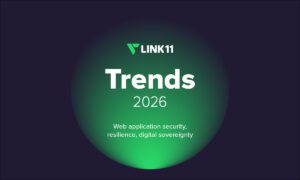In an era where cyber threats are evolving at an unprecedented pace, traditional security measures are no longer sufficient to protect cloud environments. The need for a proactive and intelligent security approach has never been more critical. Sairaj Kommera, a cybersecurity expert, explores how the integration of Artificial Intelligence (AI) with Zero Trust Architecture (ZTA) is transforming security frameworks. By leveraging AI-powered threat intelligence, organizations can enhance security posture, automate risk detection, and maintain continuous verification, ensuring robust cloud security. As businesses accelerate their digital transformation, adopting AI-driven Zero Trust becomes essential to safeguard sensitive data and ensure seamless access control.
The Shift to Zero Trust Architecture
Zero Trust Architecture (ZTA) is built on the principle of “never trust, always verify.” Unlike traditional perimeter-based security models, ZTA assumes no entity—whether inside or outside the network—is automatically trustworthy. Instead, it enforces strict identity-based access controls, continuous authentication, and micro-segmentation to prevent unauthorized access. By continuously monitoring network activity and applying adaptive security policies, ZTA ensures real-time threat mitigation. This approach has become crucial in modern cloud environments, where users, devices, and workloads interact dynamically across distributed networks.
Enhancing Zero Trust with AI-Driven Threat Intelligence
Integrating AI with ZTA enhances security by enabling real-time threat analysis and predictive risk assessment. AI algorithms can process vast amounts of security data, identifying patterns and anomalies that may indicate cyber threats. Machine learning models improve authentication accuracy, ensuring that only verified users and devices gain access. Additionally, AI-powered natural language processing (NLP) extracts critical insights from unstructured threat intelligence sources, strengthening proactive defense mechanisms.
Micro-Segmentation for Advanced Security
One of ZTA’s key features is micro-segmentation, which isolates workloads and restricts lateral movement within cloud environments. AI enhances this strategy by dynamically adjusting access permissions based on real-time risk assessments. By continuously analyzing traffic patterns and user behavior, AI-driven micro-segmentation prevents attackers from moving undetected within the network, significantly reducing the impact of potential breaches.
Identity-Based Access Controls with AI Authentication
AI plays a crucial role in strengthening identity-based access controls within ZTA. Machine learning models analyze behavioral biometrics, device reputation, and contextual risk factors to grant or deny access. Multi-factor authentication (MFA) is further enhanced by AI’s ability to detect anomalies, such as unusual login locations or unauthorized device usage. This adaptive approach ensures that access is continuously verified, reducing identity-based security risks.
Real-Time Threat Analysis and Automated Response
AI-driven Zero Trust frameworks integrate real-time threat intelligence feeds, enabling rapid detection and response to emerging threats. AI models analyze network traffic, detect deviations from normal patterns, and trigger automated security responses, such as isolating compromised assets or revoking suspicious access privileges. This automation reduces response times and minimizes the need for manual security interventions, enhancing overall resilience against cyberattacks.
Challenges in Implementing AI-Driven Zero Trust
While AI-driven ZTA offers numerous benefits, its implementation comes with challenges. AI bias in security models can lead to false positives or missed threats, requiring continuous model training and validation. Additionally, deploying AI-powered security systems demands significant computational resources and skilled personnel. Data privacy and regulatory compliance also pose concerns, as organizations must ensure that AI processes sensitive information securely and transparently.
Future of AI in Zero Trust Security
As AI technology advances, its role in Zero Trust security will continue to expand. Future developments include explainable AI (XAI) for transparent threat analysis, federated learning for cross-organizational threat intelligence sharing, and AI-driven security orchestration for fully automated cyber defense. AI-powered behavioral analytics will enhance anomaly detection, allowing for quicker identification of potential threats. These innovations will further strengthen ZTA’s ability to adapt to evolving cyber threats while maintaining strict security policies.
In conclusion, the integration of AI-driven threat intelligence with Zero Trust Architecture marks a significant advancement in cloud security. By automating threat detection, enhancing identity verification, and enabling real-time responses, AI strengthens the effectiveness of Zero Trust frameworks. As cybersecurity threats become more sophisticated, organizations must embrace AI-powered security solutions to protect cloud assets. Sairaj Kommera’s insights highlight the transformative impact of AI on Zero Trust security, paving the way for a more resilient and adaptive cybersecurity future.



































